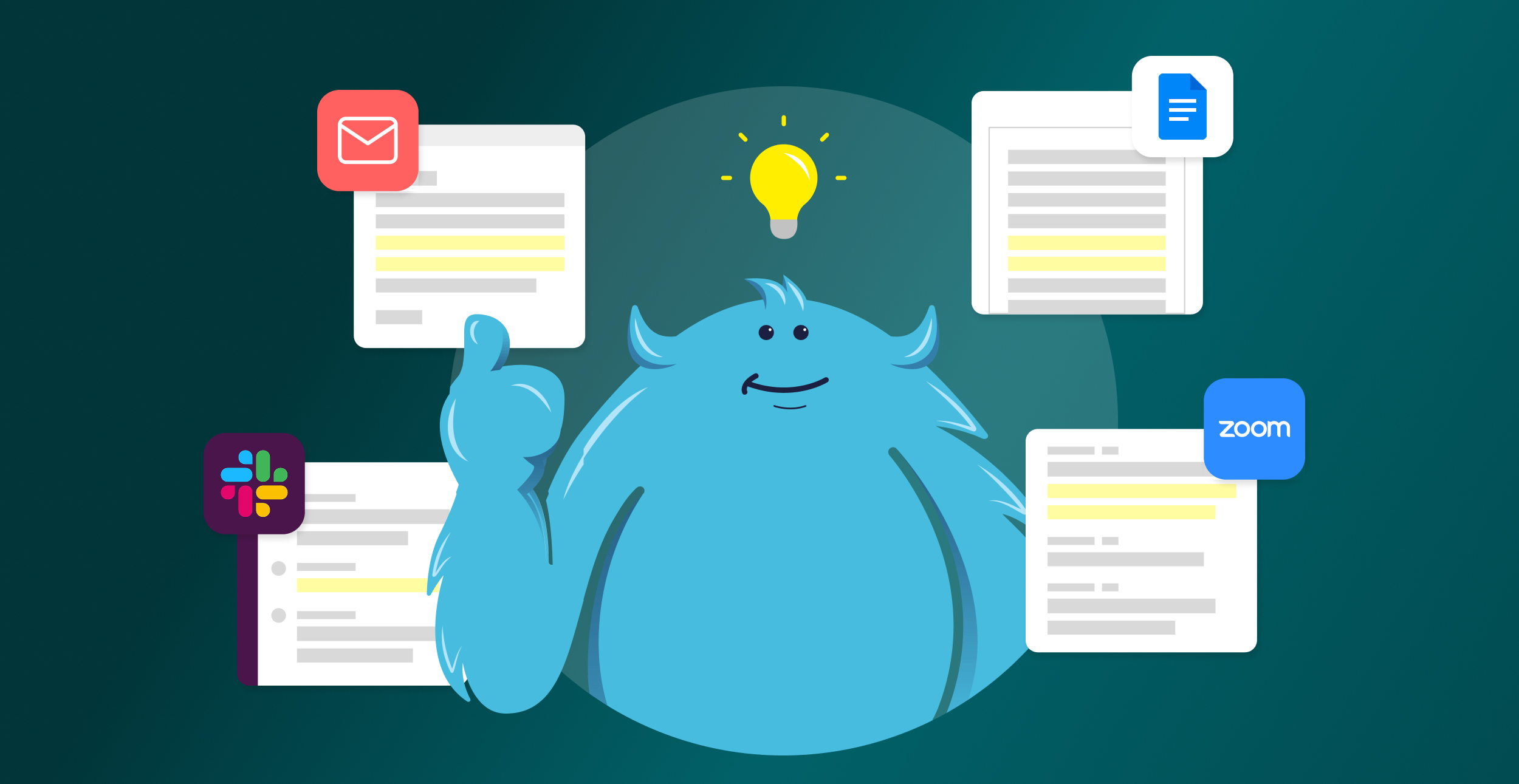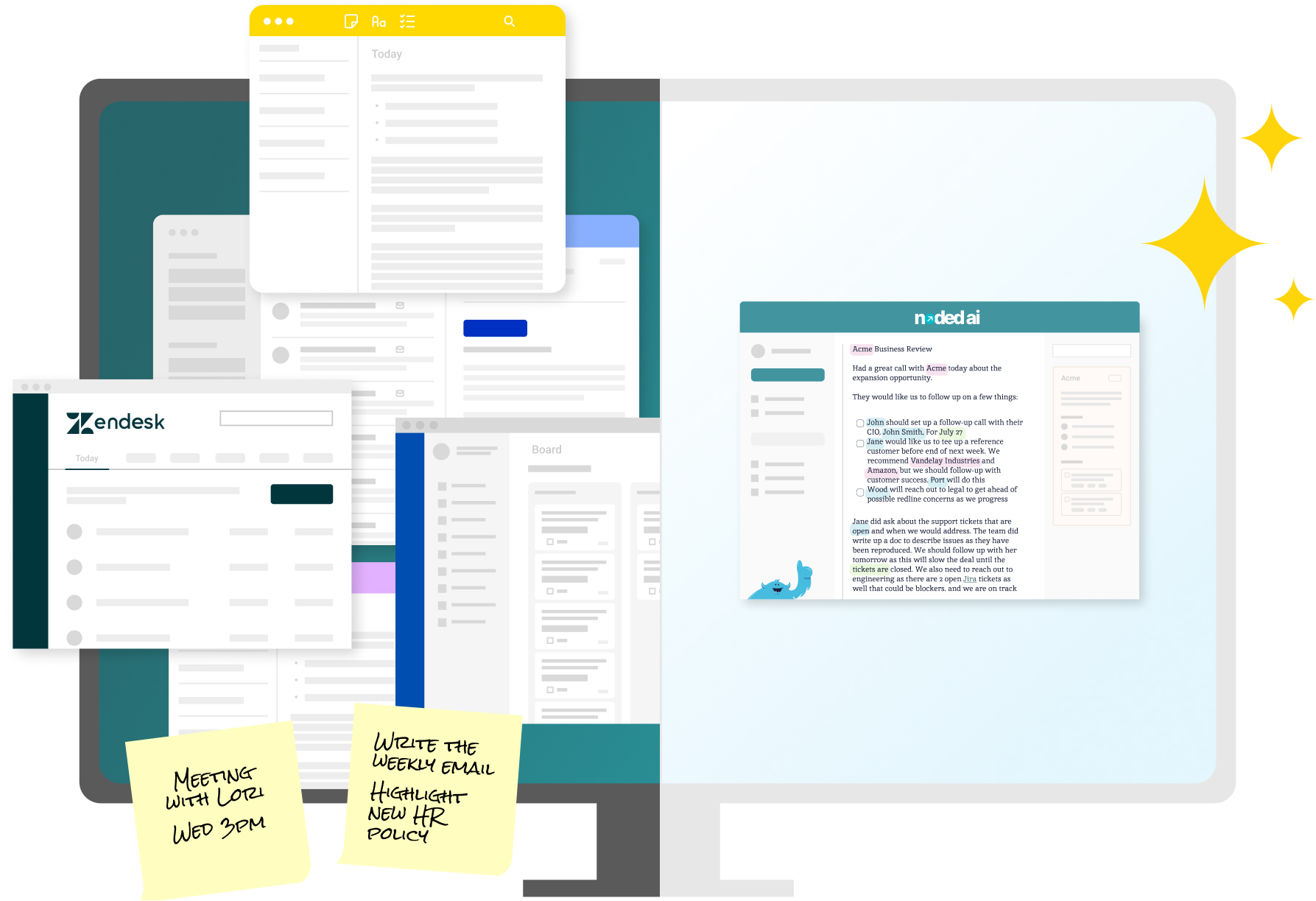Beyond Health Scores: Why Unstructured Data Defines the Next Era of Customer Success
From metrics to meaning: how unstructured data unlocks deeper customer insight.

Customer Success leaders know the feeling: a “healthy” account on the dashboard suddenly churns, and everyone is left wondering what went wrong.
ARR and NRR may tell you how much a customer is worth, but they don’t tell you how the customer feels.
The real signals are hidden in the messy, unstructured places, in the unstructured data.
In Customer Success, unstructured data is scattered across the tools your teams live in, Slack conversations, Zoom transcripts, customer emails, Zendesk tickets, Salesforce notes, Google Docs.
Each system, each data field, holds a fragment of the truth, but because they’re disconnected, the signals get lost.
Bringing them together matters because it transforms isolated scraps into a complete narrative of the account, one that reveals risks earlier and uncovers expansion opportunities faster.
Unstructured is also what doesn’t go into a data point - a clipped email, a hesitant comment on a call, a note taken off to the side and never shared, a sudden silence after onboarding.
That’s where both risk and opportunity live.

The Blind Spot of Structured Metrics
Most Customer success teams aren’t trained to treat these moments as signals.
We’ve been conditioned to look at structured metrics, usage numbers, renewal dates, survey scores…because that’s what CRMs and dashboards were built to capture.
The irony is that the strongest predictors of churn or growth are usually qualitative, not quantitative.
Senior Customer Success team members are seasoned to look at both, but what about the rest of the team? What about the accounts that they manage?
A frustrated tone in a support thread may reveal more than a green health score ever will.
And a customer casually mentioning “we’re rolling this out across another department” often signals expansion before it ever appears in ARR.
A 2025 IDC report highlights the scale of the problem: 80% of enterprise data is unstructured, yet most of it remains untapped. IDC calls out that by 2026, unstructured data will be the largest driver of competitive advantage, eclipsing traditional data sources (IDC, 2025).
In other words, most businesses are surrounded by insights they don’t yet know how to use.

Spotting Upside: The Other Side of Foresight
It’s natural to talk about unstructured data as a way to reduce churn, but that misses half the value. When connected and contextualized, unstructured signals are also your earliest expansion indicators.
- A string of feature requests across calls signals unmet demand.
- A tone of “we need more” in Slack or email hints at adoption spreading beyond the initial use case.
- A customer’s roadmap discussion reveals future alignment before a sales rep ever opens an opportunity record.
These signals are often invisible in dashboards, but they can define your revenue trajectory when surfaced.
At Noded, we see this every day. In our blog ARR/NRR Isn’t Customer Health, we show why relying on numbers alone leaves you blindsided.
Customers don’t announce expansion in dashboards, they hint at it in conversations. Sometimes it’s intentional, sometimes not.
When those hints are captured, linked, and surfaced, Customer Success teams can partner with Sales to move faster, smarter, and with more credibility.

From Noise to Narrative
For years, Customer Success leaders described unstructured data as “chaotic” or “too messy to be useful.” That perception is breaking down.
Take Silverfort, a Noded AI customer. Their Success team was already tracking renewals and adoption, but critical context was scattered across calls, inboxes, and Slack threads.
Once these signals were centralized and surfaced alongside structured data, the team didn’t just prevent churn, they identified upsell opportunities earlier. Suddenly, “customer health” wasn’t a rearview mirror metric, it was a forward-looking map of risk and growth.
This shift isn’t about replacing dashboards. It’s about enriching them. Dashboards tell you what is happening. Unstructured data tells you why. And in Customer Success, the “why” is often the difference between a lost renewal and a multi-year expansion.

The Strategic Future of Customer Success
Unstructured data isn’t a side channel, it’s the strategic engine of foresight. Leaders who can capture and translate it will become the ones shaping company strategy, not just managing accounts.
When Customer Success embraces this shift, it moves from being a cost center to a strategic growth driver. The future belongs to teams who can listen differently, who treat conversations, commitments, and context as data worth acting on.
Because the next era of Customer Success won’t be defined by who prevents the most churn. It will be defined by who uncovers growth before it’s even visible on the dashboard.
Ready to see how Noded AI can help you surface these hidden signals, prevent churn, and spot expansion before it happens?
Sign up for Noded AI today and turn unstructured data into your competitive edge.




